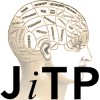Issue 7: Behind the Seams
ISSUE 7: BEHIND THE SEAMS
¶ 1 Leave a comment on paragraph 1 0 Ada: A Journal of Gender, New Media, and Technology includes the following note to authors going through their unique peer review process
¶ 2 Leave a comment on paragraph 2 0 Reviewers are not your enemy! Writers are not victims!
¶ 3 Leave a comment on paragraph 3 0 My first instinct for Behind the Seams was to make it personal, and I wrote something personal, and then I deleted it. Peer review is, to put it lightly, a rough process for me. I internalized early on in my academic career that my writing was simply not good enough. My ideas were fine, but my writing wasn’t, and I was told that my horrible, no good writing was constantly obscuring my perfectly fine ideas. I internalized this, and I’m still scared to write for an audience. This got me thinking: if a dissertation is a PhD student’s first exposure to peer review (and it should be), then it’s no wonder so many of us, for years after graduation, type out our ideas with fear rather than enthusiasm. And then so many of us review papers with a metaphorical red pen, constantly in search of what’s wrong with the paper rather than what’s right.
¶ 4 Leave a comment on paragraph 4 0 Most of contemporary rethinking of peer review reconsiders the form. At JITP we’ve eschewed double-blind peer review for signed peer review, so at the very least the author knows the name of the person providing formative feedback on their article. We are also experimenting in this space with the practice of public peer review. With that in mind, we’ve asked Lee Skallerup Bessette, the author of our first publicly peer reviewed article, to share her experiences with JITP getting her article from draft to final product. We will begin that process in this space after her article, #FYCchat – A Case Study of Connected Learning and Educators, has been open to the public for a few weeks.
¶ 5 Leave a comment on paragraph 5 0 While the form of peer review may constantly evolve, we should also reconsider the purpose of the peer review project as a whole. In the past, peer review has been a gatekeeper. Many of us now wonder, is that what peer review should be? Or should peer review help authors, reviewers, and readers alike reach the nexus of compassion and rigor that makes for great critical thinking and writing?
¶ 6 Leave a comment on paragraph 6 0 — Issue 7 co-editor Renee McGarry, Sotheby’s Institute of Art



Comment awaiting moderation
[…] of this article did, what might be lost as those frameworks change. Public peer review, as Renee McGarry and the editors of Hybrid Pedagogy have argued, can be used to reframe the goals of the review in […]
[…] The Challenge for Post-Publication Peer Review (with an eye to finishing our Issue 7 Behind the Seams) […]
[…] Special Feature: Behind the Seams […]